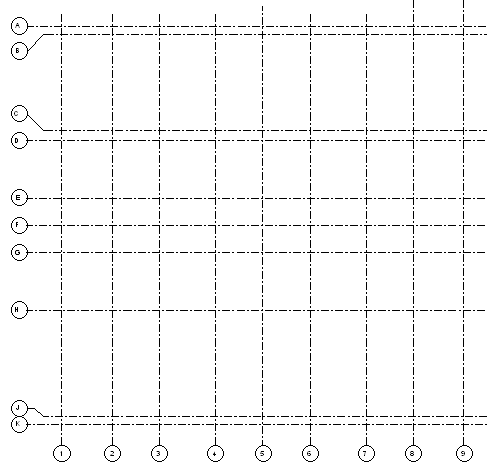 Revit Structure
Revit Structure
 Revit Structure
Revit StructureStructural columns are used to model vertical load-bearing elements in a building. Although structural columns share many of the same properties as architectural columns, structural columns have additional properties defined by their configuration and industry standards. Structural columns differ from architectural columns in behavior as well.
Structural elements such as beams, braces, and isolated foundations join to structural columns; they do not join to architectural columns.

In addition, structural columns have an analytical model that is used for data exchange. See Structural Member Analytical Models.
Typically, drawings or models received from an architect may contain a grid and architectural columns. You create structural columns by manually placing each column or by using the At Grids tool to add a column to selected grid intersections.
Structural columns can be created in plan or 3D views.

Adding columns in 3D View
It is helpful to set up a grid before adding structural columns, as they snap to grid lines (see Adding Grids).

Sample grid for placing structural elements
The grid lines also provide vertical planes for braces. Click Structure tab Datum panel
Datum panel Grid.
Grid.
You can place structural columns that attach to other structural elements. For more information, see Attaching Columns.